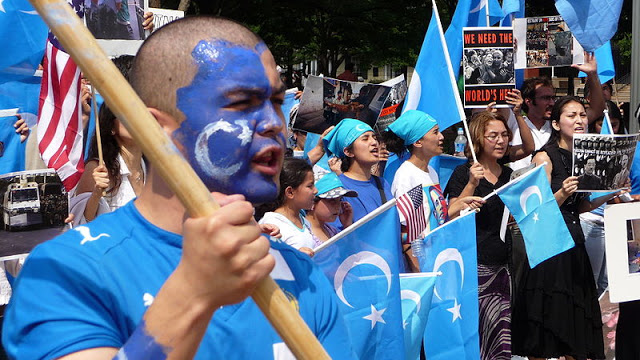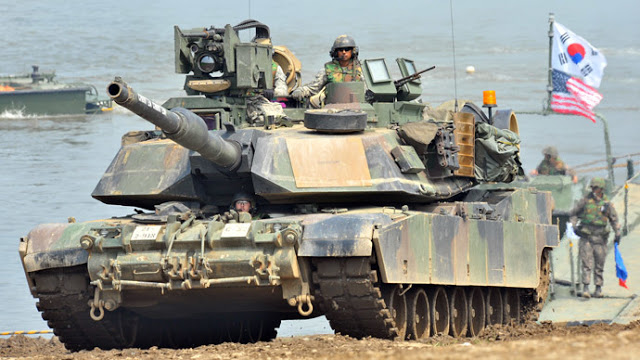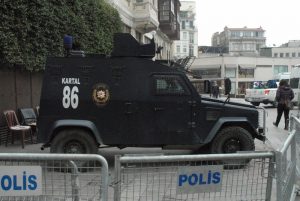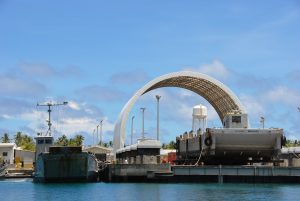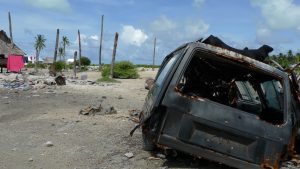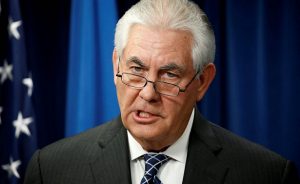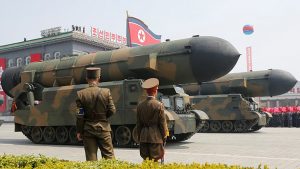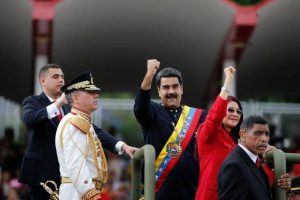This article first published in June 2017, refutes the mainstream media’s interpretation that North Korea, which was totally destroyed during the Korean war (1950-53) is a backward country and that its citizens live in a state of abysmal poverty.
“My conscience leaves me no other choice than to break the betrayal of my own silences…I know that the greatest purveyor of violence in the world today is my own government.” The Reverend Martin Luther King, Recipient of the Nobel Peace prize.
“The United Nations which was created to prevent the scourge of war has become an instrument of war.” Former U.S Attorney General Ramsey Clark
Introduction
Washington, D.C. White House tape recordings, April 25, 1971
President Nixon: “How many did we kill in Laos?”
National Security Adviser Henry Kissinger: “In the Laotian thing, we killed about ten, fifteen thousand”
President Nixon: “See the attack in the North Vietnam that we have in mind..power plants, whatever’s left, POL (Petroleum) the docks..and I think we ought to take the dikes out. Will that drown people?”
Kissinger: “About two hundred thousand people.”
Nixon: “I’d rather use the nuclear bomb. Have you got that Henry?”
Kissinger: “That, I think, would just be too much.”
Nixon: “The nuclear bomb, does that bother you? I just want you to think big for Christ sakes.”
May 2, 1972
Nixon: “America is not defeated. We must not lose in Vietnam…The surgical operation theory is all right, but I want that place bombed to SMITHEREENS If we draw the sword, we’re going to bomb those bastards all over the place. Let it fly, let it fly.”
Former President Jimmy Carter: “More than any other nation in the world, the US has been involved in armed conflict and has used war as a means of resolving disputes…I listed 10 or 15 wars and I could have listed 10 or 15 more. The rest of the world, almost unanimously, looks at America as the No. 1 warmonger. That we revert to armed conflict almost at the drop of a hat.” (April 10, 2014).
***
Upon my return, on May 25, 2017 from the DPRK I was appalled by the totalitarian mind-set revealed by the fifteen members of the UN Security Council who supported the new Chapter VII Resolution 2356, increasing the strangling sanctions against the DPRK, a heroic , progressive, admirable people desperately trying to defend themselves from any repetition of the barbaric slaughter inflicted upon their nation, with the criminal collusion of the UN Security Council, during the first Korean War, 1950-1953. The unanimous support for the new sanctions by all 15 Security Council members is shameful. All fifteen members of the Security Council, including the United States, know, categorically, that the DPRK will not attack another country unless they are attacked first, or provoked intolerably.
The United Nations is, once again, demonstrating that it is an annex of the US Pentagon. It had seemed, with the Russian-Chinese veto of Chapter VII Resolutions against Syria, in recent years, that the UN had some dignity as an independent organization. On June 2, the UN Security Council revealed that each and every member is under the thumb of the U.S., and willing to unleash a barbaric and criminal attack against a tiny Asian country that is a successful example of a socialist system, and still enduring, despite the criminal sanctions that have so far been inflicted upon that noble people by a racist society that still seeks to impose its will throughout the Eurasian continent. As General MacArthur said, “the Pacific Ocean is an Anglo-Saxon lake.”
When the great statesman, Lakhdar Brahimi was asked why the United Nations premises and personnel are attacked, repeatedly, in recent years, Brahimi replied that the UN is no longer perceived as an impartial organization, but is now perceived as a party to disputes. There is no more glaring example of the United Nations craven servility to the United States dictate than the Security Council’s unanimous support of the viciously punitive sanctions against the DPRK, a country that must be described as a paradise for children, providing excellent, up-to-date health care and education, free of charge, an achievement that few western capitalist countries can demonstrate.
Joseph Goebbels, Adolf Hitler’s Minister of Propaganda, asserted that
“A lie told one thousand times becomes accepted as truth.”

The way the West portrays DPRK (Source: Andre Vltchek)
One of the greatest successes in totalitarian brainwashing has been achieved by the Western Media, which dominates too many people in the West, and within the UN system, who, ignorant of the realities of life within the DPRK, nevertheless challenged me with arrogance when I described what I had discovered during my actual, personal visit to the DPRK. None, and I repeat, none of these people had ever visited the DPRK, yet they held forth with aggression exceeded only by their ignorance, insisting, like imbeciles, that they, despite their complete dearth of accurate knowledge, knew what I had seen.
Part I
After just returning from an in-depth visit to the DPRK, it is difficult, if not impossible to convey in words, or even in photographs, the absolutely awe-inspiring achievements of the people and government of North Korea, who following an unspeakably barbarous attack by the US and South Korea, which, with shameful collaboration by the United Nations, obliterated their entire country, heroically rebuilt their nation.
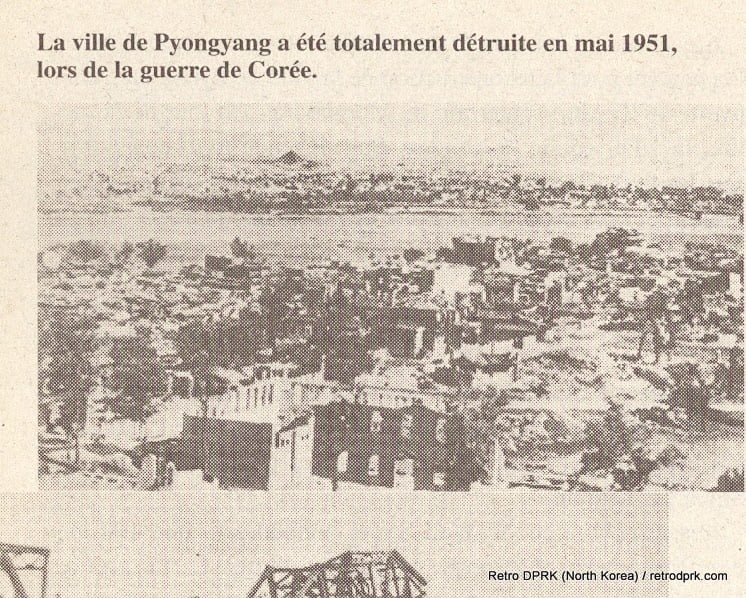
Today, North Koreans heroically persevere in their socialist development, despite the criminal sanctions being inflicted upon the DPRK by the UN Security Council, which is attempting, in craven servility to US “interests,” to demolish this noble example of an economically and socially equitable and democratic society. The DPRK remains an example of the courageous pursuit of social and economic justice, despite the existential menace to their survival resulting from the relentless and deadly threats from the overwhelming military power of the ongoing US and South Korean military “exercises” at their border, (exercises entitled “decapitation of the head of government,”) and economic and atomic blackmail by the US, and its servile Security Council.

DPRK Free Public Housing (Source: Andre Vltchek)
Prior to my visit, I was invited to submit a list of activities and people I wanted to visit in Pyongyang. Almost all my requests were honored during this visit.
When I stepped off the Korya jet onto the airport of Pyongyang, I had no idea of what to expect, beyond the propaganda blitz and dire predictions of danger, preconceptions that had overwhelmingly corrupted the minds of almost everyone in the West, and at the United Nations at the mere mention of North Korea. I knew instinctively, based on past experience with such propaganda, that the truth must inevitably be entirely different from the horror stories I had been told by even the more educated and sophisticated of my colleagues.
But nothing I had heard had prepared me for this discovery of a nation of courageous, loving people, of great intellect, whose efforts to create a society of economic and social justice and equality were succeeding, beyond my wildest hopes and expectations, and despite the barbaric Gestapo-style sanctions inflicted upon these remarkable people by the US and its puppet creation, the UN Security Council.
My discovery began on the Air Korya jet transporting me from Beijing to Pyongyang, and the conversation I began with the North Korean man sitting next to me. He was not the dour, fearful person the propaganda had led me to expect, but a friendly and riotously funny raconteur, who described North Korea as one of the last socialist countries left in the world. As we spoke with the lovely flight attendant sitting opposite us, he whispered to me that she was a spy. I replied: “Which side is she spying for, the CIA or North Korea?” He then added the man sitting in the row behind us was a spy. I peeked through the seats, and said that the man behind us was sleeping. My new Korean acquaintance said that the man behind us was only pretending to be asleep. I finally realized that my new acquaintance was teasing me, and knowing that I am American, was playing upon the preconceptions he knew I had been indoctrinated with. We discussed the current chaotic world, and as the short flight ended, and he thanked me for an interesting conversation, I realized that these North Koreans might be more interesting, and charming than I had been led to expect.
Awaiting me at the Pyongyang airport was Mr. Jang Su Ung, the interpreter and guide I had requested when I had presented my long list of requests, in submitting my visa application from New York. The North Koreans could not have chosen a more perfect guide for my journey throughout their capital, a man whose infinite patience, sensitivity and sophisticated intellect were so well suited to my own insatiable curiosity and temperament that my entire visit became the seamlessly happy discovery of a nation of people of surpassing intelligence and dedicated to those humanitarian values I had despaired of ever finding. The totalitarian campaign demonizing North Korea had prepared me for the exact opposite.
I was whisked to the lovely Kobangsan guest house, and immediately upon arrival I was greeted by the elegant and gracious Mr. Ri Yong Pil, Deputy Director-General of the North American Division of the Ministry of Foreign Affairs. He thanked me for my prior articles about his country, and invited me to a dinner that evening. After I had changed out of my pink sneakers and into more formal attire, we enjoyed a long dinner of delicious Korean cuisine and a candid, comprehensive discussion of the current extraordinarily complex realities of today’s world, and North Korea’s unique situation within it. I asked the most probing, undiplomatic questions, avoiding evasions and confronting the most controversial issues. I raised the question of the infamous Kirby Report, which I had already studied in depth, and discovered to be a propaganda fabrication based upon reports by defectors who were highly paid for the their gruesome fabrications, and the more grotesque their stories were, the more highly paid they were. The chief defector, upon whose account Michael Kirby’s Report was chiefly based, Shin Dong-hyuk, subsequently admitted he had lied and falsified his statements, which were, in fact repudiated by the defector community itself. Knowing my questions might be embarrassing for my host, but knowing, also that my probe was essential for the authenticity of my own investigation, I asked Mr. Ri about the identity of these defectors. He replied that some of the defectors had been imprisoned for rape, and other crimes, and that these were not “political prisoners,” as Michael Kirby’s Report falsely alleged. It is important to mention that Michael Kirby has never visited North Korea, and his “commission of Inquiry” is based entirely on hearsay, which was subsequently revealed to be fraudulent. UN Assistant Secretary-General for Human Rights, Ivan Simonovic admitted that the Kirby report by the Commission of Inquiry (based on statements by defectors highly paid to provide the salacious fabrications they understood were sought by the “inquiry,”) does not meet the standard of proof required for admission as evidence in a court of law.
Mr. Ri advised me that, although China had recently turned back two North Korean ships delivering coal to China, in submission to the abhorrent UN sanctions, in fact many nations and industrialists were eager to do business in North Korea, and to invest in developing the DPRK’s rich resources. The UN’s outrageous sanctions are comparable to the embargo the US placed upon Cuba for decades, and which many astute businessmen, in the US and elsewhere, regarded as counter-productive and idiotic.
Mr. Ri emphasized that the North Korean government and economy, in particular, was based upon the principle of self-reliance, and had avoided, whenever possible, becoming excessively dependant upon any other country, and this explained North Korea’s ability to sustain their progressive, humanitarian social programs despite the punitive and criminal UN sanctions which were attempting to strangle the nation. He mentioned, with greatest respect, that when, recently, severe floods devastated the northern part of the DPRK, causing many deaths and destruction of people’s homes, President Kim Jung-un immediately suspended work on less essential structures in Pyongyang, and directed the workers to go to the northern flooded area, and build new homes for the flood victims. His immediate assistance to the victims was admired by everyone in the country.
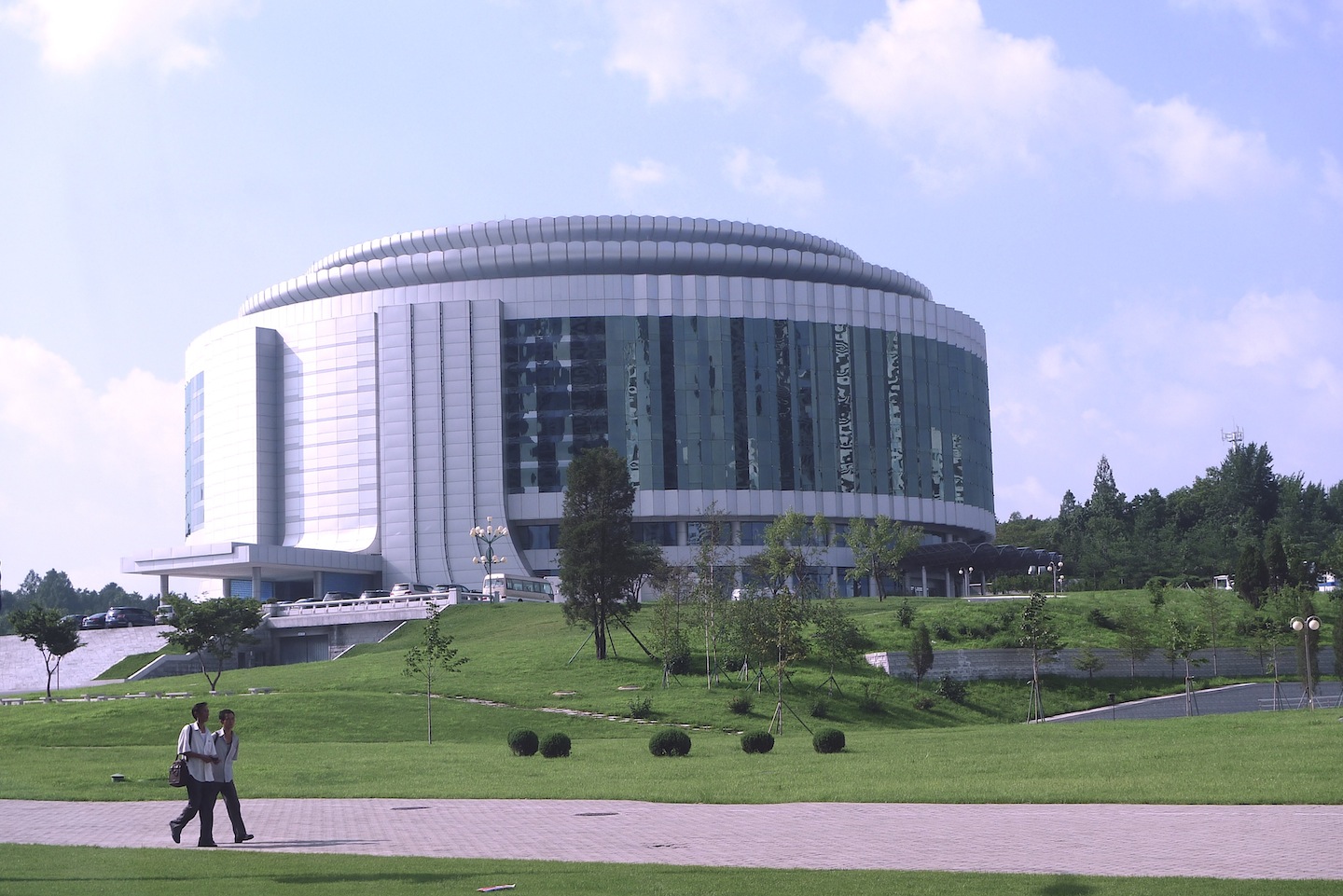
One of the many theatres in Pyongyang (Source: Andre Vltchek)
The dinner, my introduction to the DPRK government, lasted several convivial and illuminating hours, and Mr. Ri revealed zero ideological rigidity or fanaticism, and absolutely no belligerence or aggression toward any other country, including the American people. His focus was upon sustaining and protecting the economic and social programs providing dignified and fulfilling lives for the citizens of the DPRK. I disclosed to him, and to Mr. Jang, in confidence, that I was present at a reception in New York when a famous and respected American mainstream reporter, accredited to the UN said to Chinese Ambassador Liu:
“If I were Kim Jong-un witnessing the attack on Libya, and the torture-murder of Gaddafi, after he had abandoned their nuclear program, I’d hold on to my nukes!!!”
The morning of May 19 we visited the Okryu Children’s Hospital, which can only be described as a miraculous tribute to the children of North Korea, a design so comforting and respectful of children’s needs that the building itself helps to relieve the trauma, for both children and their parents, of children’s illnesses and injuries, which are treated by expertly trained physicians and nurses, with the most up-to-date equipment. There are similar hospitals throughout the country, and physicians at other facilities consult, by skype with medical staff at the main Pyongyang hospital, and where cases are too complex or cannot be handled at regional hospitals, children needing more complicated surgery or emergency treatment, are transported by helicopter to the main hospital in Pyongyang for the more extensive treatment necessary. There is a helicopter landing facility, or helipad, just outside the hospital.
All medical treatment is free of charge, and all children throughout North Korea have access to these medical facilities. I have never, anywhere, seen any children’s hospitable of comparable high quality and concern for the particular physical and emotional needs of children – and their parents. The physical therapy section for children born crippled, or with leg deformities which render them unable to walk, was absolutely extraordinary, teaching exercises which built – or rebuilt their foot and leg muscles, transforming them from cripples into children free to walk and run and play normally. And the diligence with which the children practice these healing rehabilitating exercises is both inspiring and profoundly moving.
Just prior to entering this hospital, I noticed a detail which revealed a world of information about the North Korean women. To my amazement, a woman entering the hospital with her child was wearing gold stiletto high heels – she was indeed glamourous and elegant, confounding my expectations. This exploded the stereotypical myth that Korean people are attired in drab, dowdy clothes, exposing their impoverished, degraded condition that the outside world so erroneously attributes to them. I then noticed, with fascination, that other women, too, wore glamourous high heels, often combined with elegant clothing and colorful parasols protecting them from the sun. I mentioned to Mr. Jang that I emphasize this detail, because a woman’s shoes, especially high heels, are very often an expression of her self-esteem. And these women, throughout Pyongyang, evidently enjoy high self-esteem. And as my visit progressed, I recognized that the DPRK has achieved notable progress on gender-equity, one of the UN’s 2030 Sustainable Development Goals.
Next, that morning, we visited the Ryugyong Ophthalmic Hospital, which provides the most modern, up-to-date treatment for everything from Glaucoma to Macular Degeneration. I can attest to the expert level of their facilities, as I had my own monovision contact-lenses checked there, and the results of their examination were identical to those of my top ophthalmologist in New York. These hospitals are filled with patients of all ages, and all of whom receive treatment completely free of charge. Mr. Jang informed me that physicians and their families have all their expenses paid by the government, so that the doctors are free to concentrate, without distraction, exclusively upon the needs of their patients, thereby providing their patients with the optimal level of care.

Ryugyong General Ophthalmic Hospital (Source: KFAUSA.org)
That afternoon we visited the Pyongyang High School No. 1, where, at my request, I visited classes of biology, chemistry and physics. They invited me to look through the microscope with which the students were examining the composition of plants, and I saw the greatly enlarged veins of a leaf. In the chemistry class, I discussed with the students the chemical substances they were studying, and when I saw the beautiful woman teaching the class I mentioned to my translator that these students might fall in love with their chemistry teacher, and like the new French President, Emanuel Macron, might marry this beautiful teacher, probably 25 years older than they, as the French President Macron had done. My remark, in jest, was conveyed to the teacher, who laughed, and understood my reference, and my translator, with sincere amusement enjoyed my observation, irreverent though my comment was! The physics students explained that the object I noticed on their desks was a gyroscope, and we discussed their plans and ambitions as the future physicists of the DPRK.
These science classes included both girls and boys. I explained that I was a visitor from the United States, and I look forward to the future friendship of our countries. All the students agreed with my hopes. They were normal, delightful, beautiful, and (I was told) occasionally mischevious children, the future of their country. Outside the school were basketball and tennis courts. The Schools throughout the country are free of charge, and education is compulsory throughout the DPRK.
Afterward, I discussed this visit with Mr. Jang, who advised me that this level of students are serious and diligent, as they are preparing for exams to enter the college and universities. I mentioned to Mr. Jang that the educational level of the parents would contribute to the students’ performance on examinations, and I mentioned that the children of factory and agricultural workers would be deprived of the intellectual enrichment that children of professional and intellectual workers would receive, and these differences might affect their examination performance. Mr. Jang replied that, in fact, all factories had schools and other educational facilities on their actual premises, so that factory workers had access to all educational facilities both during and after their working hours, to correct any inadequacies in their educational preparation, which thereby enabled them to impart to their children information similar to that provided by their professional or intellectual comrades. Agricultural workers are also provided with access to educational facilities, to supplement their education.
Saturday Morning, May 30, we visited the Monument Tower to the Worker’s Party of Korea, depicting the Korean struggle, under the leadership of Kim Il Sung, for independence from Japanese imperialism. I was intrigued by the symbol of the WPK, which Mr. Jang explained to me as follows: whereas other symbols of communist parties depict the sickle and hammer, symbolizing both the industrial worker and agricultural worker, in the center of the DPRK symbol is a pen, signifying the prestige of the intellectual worker in North Korean society. This was a revelation, and may explain the great success of the DPRK in developing an advanced socialist society, prevailing over renewed attempts to obliterate the entire country, and speeding ahead with scientific achievements, medical developments, green technology, clean energy, space satellites, and now the development of the nuclear weapons that are essential to protect the country from another attack by the US-ROK aggressors, or by Japan, or aggressive imperialist invasions by any other country.
Unlike other ill-advised attempts to dispatch intellectuals to manual work, Kim il Sung’s decision to afford prestige to the intellectuals propelled North Korea’s development, and it remains today so successful a model of socialist economic and social development and its achievement is so threatening to the deteriorating capitalist economies of the US and Western Europe that those capitalist countries are pathologically obsessed with destroying what their own systems cannot achieve.
The UN sanctions are deliberately isolating the DPRK, and forcing it into an economic and political ghetto, in persecution for its chosen economic and political path of development, and way of life. This is no different from the Nazis forcing the Jews into a ghetto in Warsaw. The UN sanctions are suffocating the industries of the DPRK, just as the Gestapo forced the closing of Jewish businesses in the ghetto. And this preceded the extermination of a people in Europe, as the UN Sanctions against the DPRK may well be preceding attempts to exterminate that people in Asia
Western Capitalist countries are confronting economic crises, with ill-advised “austerity measures” destabilizing Germany, Italy, France, England, dismantling social protections, provoking riots and increasing terrorist attacks. Scapegoating the DPRK is a distraction, and North Korea remains an impediment to Western Capitalist hegemonic control of Eurasia. Geographically, Korea, which borders on Russia and China is the gateway to the Asian continent. General Douglas MacArthur, aware of the military and strategic importance in the situation of Korea raved,
“By occupying all of Korea we could cut into pieces the one and only supply line connecting Siberia and the South…, control the whole area between Vladivostok and Singapore…nothing would then be beyond the reach of our power.”
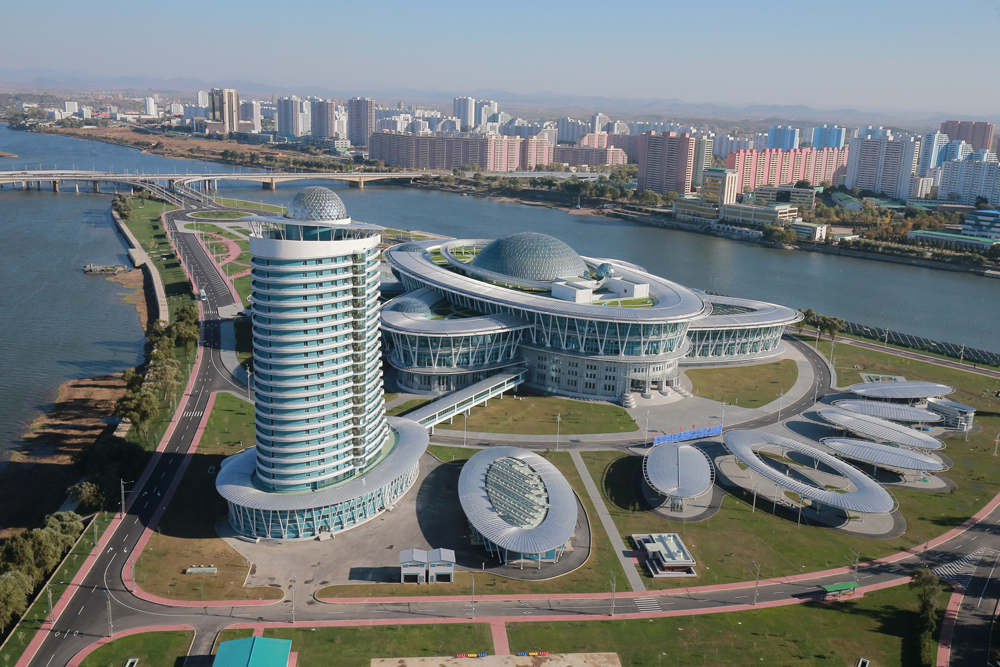
Aerial view of the Sci-Tech Complex (Source: Explore DPRK)
On the afternoon of May 20, we visited the Sci-Tec Hall, a dazzling exhibition of the DPRK’s scientific achievement, from space satellites to clean energy technology, and my guide, the exquisite Ms. Kim Won Sim, a theoretical physicist, was the quintessence of elegance, personal and intellectual, and when she mentioned her interest in the Schrodinger equation and quantum theory, I replied that I had also been fascinated by advanced mathematics, which I studied years ago as an undergraduate at Bennington College, and later at Columbia University, and I had a particular interest in the Heisenberg Uncertainty Principle.
At that moment, she understood my thinking, and a bond was forged between a North Korean woman physicist and an American woman journalist, who were united by Schrodinger and Heisenberg, sharing a language transcending national boundaries and the insanity of war. Like so many other North Korean women, I noticed that her complexion had a translucent purity, and I did not know whether this was the result of a special moisturizer unknown in the West, or simply good health.
I confessed to Ms. Kim, as to no one else, why I had given up science – I had not integrated or differentiated a function in decades. Nevertheless, as she now knew that I was well acquainted with these subjects, she promised to present me with a mathematical puzzle. Though I protested that I had not looked at a mathematical equation for three decades, I could not resist the temptation of her challenge.
After showing me the special rooms providing scientific equipment and facilities for the disabled, including the blind, and the enchanting rooms and displays introducing science to children, and innumerable other scientific exhibits of achievements in fields of bioengineering, marine and space technologies, and their scientific and technological principles, trends in agriculture, hydraulics, hydrometeorology, metal, rail transport, architecture, electronics, to mention only a few displays, she presented me with the mathematical puzzle she had promised.
When I had determined the correct method of solving it, sequentially, she advised me that it required 127 steps to complete, and as I was already late, and had only minutes left, I could not complete the task, which, in any case, she informed me I had already basically solved. She insisted, however, before we parted, on teaching me how to say “Hello” in Korean, which opened up another new world of discovery to me, when, each time I greeted a Korean child in their own language, they bowed, politely, deeply and ceremoniously to me, and I, in turn curtsied to them.
I spoke freely and at random to people I met in all places, and I greeted North Korean soldiers in their language, stating that I am a US citizen, and our two countries should be friends. They unhesitatingly agreed, as all barriers of nation, race, language and stereotyped preconception dissolved and the human connection replaced those artificial, alienating obstacles.In these transformative days I forgot the past, all programming and indoctrination, as I became assimilated in the rich intellectual and humanitarian culture of North Korea.
Our day ended at the Mirae Scientist Street, where Mr. Jang showed me the housing community where the scientists and their families live, free of all expense, as all facilities, including medical, necessary for their families were supplied without charge, so that the scientists were unfettered by worry about supporting their families, and were able to concentrate their minds on their scientific endeavor. This was another clue to the rapid scientific development of North Korea.
As we drove back to the Kobangsan Guest House for dinner, I witnessed a sight of unforgettable beauty: we passed a rural area of agricultural workers in a field. On the field was spread a gorgeous hot pink blanket, and on the blanket was a little girl of approximately 6 or 7 years, dancing, for her own amusement, and that of any observer. Where she learned those dance movements I do not know, but her precision and delight in her own performance were riveting to behold. She was most probably the child of one of the agricultural workers, awaiting the end of the work day when the family would return home for supper, and she was practicing her dance movements as she waited for her parents. Her pleasure and her skill were obvious. I regret that I did not ask Mr. Jang to stop the car immediately to take a video of that beautiful child in her brightly colored dress, as she graced the field on that golden afternoon.
Part II
The Perversion of “Human Rights” as a Weapon of Mass Destruction
The corruption of the concept of “human rights” for use as a weapon of mass destruction has been perfected at the United Nations. As Michael Bassett points out in his essay: “Modern Warfare Korea: the Weaponization of Human Rights”:
“For decades, the American government has shaped and harnessed mass hysteria,“ according to Andrew Burt, “to achieve American political ends abroad. The UN North Korea human rights Commission of Inquiry conveniently established itself within four months of Kim Jong-il’s death.
As PhD. Candidate Steve Haarink points out, “Since 2006 every Commission of Inquiry has preceded military action that worsened human condition.”….. “The National Endowment for Democracy heavily finances those NGO’s who develop such hysteria. …Governments intentionally manufacture and harness human rights hysteria. “…..While NED is the go-to organization for financial support amongst North Korea Human Rights NGO’s, the Department of Defense finances a vast human rights industry…..” “Following international media big and small, especially from the US, one acutely gets the feeling that human rights awareness campaigns operate like bombs – they target, they explode, and they seek to destroy all that is in sight. They are about precisions, but like bombs their explosions can be exactly the opposite – imprecise, unpredictable, and indiscriminate in their maiming. Though their campaigns impact thinking here, their devastation is always across the border – foreign land, foreign lives, and foreign necessary cost of winning. Human rights awareness campaigns have transformed North Korea Human Rights NGO’s into US government-funded information warfare contractors….” “First, it is known that a lying Iraqi defector influenced the decision-making process that led the US into Operation Iraqi Freedom – a war that destabilized the Middle East, leaving it in ruins. Second, North Korean defectors have been known to organize secret disinformation campaigns to sway public opinion in their interests….” “Collapsing a country is no easy task. The strategy, or so it appears, consists of several campaigns occurring simultaneously. It is unknown to the author who – if any single person – is orchestrating the overall “North Korea Operation,” but it is apparent that there is a concerted effort to forcibly collapse the regime.
Allen Weinstein, who helped draft the legislation establishing NED, was quite candid when he said in 1991:
“A lot of what we do today was done covertly 25 years ago by the CIA.”
In 1993 the distinguished Pulitzer Prize winning journalist Murray Kempton wrote me a personal letter describing the National Endowment for Democracy as a “repellant and vicious pest,” and those words perfectly describe the NED’s proteges, the “celebrity defectors,” central to the militarized disinformation campaign. As Shen Dong-hyak’s falsifications have disgraced him, a new rock-star defector, YeonMi Park makes over $12,000.00 per speech, slandering the DPRK with her disinformation campaign,with much more money in the offing. Indeed, contriving disinformation slandering the DPRK is becoming a very profitable industry, a lucrative profession comparable to the oldest one.
One afternoon, as we drove to a meeting, Mr. Jang brilliantly analyzed the methods and purpose of the sanctions. To paraphrase what he said: The sanctions depress and degrade the quality of life for the people in a nation, who, in misery and frustrationeventually blame and attack the government, bringing about its collapse, and causing regime change, and this is accomplished without military intervention.
On the April 28, 2017 Ministerial Level Security Council meeting, Russia’s Deputy-Minister Gatilov stated:
“Sanctions should not be used either economically to suffocate the Democratic People’s Republic of Korea nor to worsen the humanitarian situation. This applies in particular to the illegitimate unilateral restrictions targeting civilian areas not associated with the country’s nuclear missile programmes. Such sanctions are the reason for the serious deterioration in the living conditions of the North Korean people, which, incidentally, was identified as a cause for alarm in the most recent report of the Office for the Coordination of Humanitarian Affairs. They are justifiably very alarmed about that. We must acknowledge that the humanitarian exemptions provided for by the Security Council’s sanctions regime essentially do not work. Because of the ban on correspondent relations with the Democratic People’s Republic of Korea, it is impossible to purchase abroad the goods and food stuffs necessary for the economy. Because of the way the financial and banking system works, it is very difficult to obtain funding for the United Nations humanitarian agencies that are still working in the country. Since Pyongyang cannot replenish its foreign currency reserves owing to the existing restrictions, it could find itself in a situation where it is impossible for it to give the United Nations the funds that are to be channeled to it, as permitted by the Committee. A separate issue is the situation with regard to foreign diplomatic missions in Pyongyang. We should not allow a situation in which diplomatic missions continue to experience difficulties in carrying out their work because of the restrictions imposed on the country. We have repeatedly raised this issue at meetings of the Security Council Committee established pursuant to resolution 1718 (2006), but as a result of the obstructionist position taken by its individual members, the situation has not changed at all.”
Among the most despicable examples of hypocrisy and double standards contained in Resolution 2356, adopted under Chapter VII, is the passage stating:
“Expressing great concern that the Democratic People’s Republic of Korea’s prohibited arms sales have generated revenues that are diverted to the pursuit of nuclear weapons and ballistic missiles while the Democratic People’s Republic of Korea citizens have unmet needs.”
The above passage is a grotesque travesty of concern, and a projection by the United States of its own brutal and inhumane investment in nuclear weapons while the needs of the American people are ignored, and while the taxes of the American people are stolen to fund “upgraded” nuclear weapons – and war. By April, 2016 the United States government invested one trillion dollars in developing and modernizing nuclear weapons, a nuclear “revitalization program,” including five classes of improved nuclear arms and associated delivery vehicles, building nuclear weapons that are smaller, stealthy and precise. At Los Alamos, New Mexico, senior military, nuclear weapons officials convened in Albuquerque to promote $1 trillion nuclear weapons plan. The meeting was organized by the “Strategic Deterrent Coalition” (SDC) and by Northrup Grumman, Boeing, Orbital ATK, BAE Systems, etc., and directly funded by the Air Force. Present at the meeting are Speakers: Adm. Cecil Haney, Commander of the US Strategic Command, Lt. General Jack Weinstein, Dep. USAF Chief of Staff for Nuclear Integration, General Robin Rand, Commander, Air Force Global Strike Command, and others, including the Mayor of Albuquerque Richard Berry.
As was stated by an opposition group,
“The fairly tight-knit, militarist, anti-environmental political faction shaped and sustained by the nuclear weapons enterprise in New Mexico has worked with considerable success to undermine labor, environmental protection, and socially-progressive policies in our state for many years. Their negative influence has strongly contributed to the poor economic and social outcomes we see. Our fawning loyalty to the nuclear weapons mission, to the two big labs and to Kirtland among the other bases is a political addiction, a sickness.”
While the United States invests $1 trillion tax dollars in “revitalizing nuclear weapons,” Save the Children Federation, based in Fairfield Connecticut reports that:
“The United States continues to have one of the highest infant mortality rates among high-income industrialized countries…In 2015 an estimated 23,455 babies in the United States died before their first birthday – more than the combined total of infant deaths in 40 European countries during the same year. Nine small, impoverished rural counties in Texas reported a combined average mortality rate of more than 22 per 1,000 live births in 2013..”
“One in every five children lives in a household that does not have regular access to food.” “Millions of families across America struggle to put healthy food on their tables. One in every five children lives in a household that does not have regular access to food throughout the year.Nearly 1 in every 3 households with an income below the poverty threshold experienced food insecurity in 2015. In addition, more than half a million children live in households with ‘very low food security,’ according to the latest government figures. Children in these households face a much higher risk of malnutrition, obesity and hunger, which could hinder their physical and mental development and reduce their chances of growing up strong and healthy….Overall, 13.1 million children lived in households that lacked access to adequate food sometime during 2015. Of greatest concern are the estimated 541,000 children who live in households that experienced ‘very low food security.’ For these children, the situation was ‘so severe that caregivers reported that children were hungry, skipped a meal, or did not eat for a whole day because there was not enough money for food.”
“Lack of education traps children in poverty. Each year an estimated 750,000 students drop out of school and join the ranks of some 5.5 million U.S. youth aged 16-24 who are neither in school nor working. For millions of young adults, they have dropped out of school and now face a life of endless struggle, with few prospects of finding a job with a livable wage, buying a home or supporting a family. “
“Child abuse and drug dependence also disrupt the lives of hundreds of thousands of U.S. children each year. In 2015 there were 683,000 reported victims of child abuse. Three out of four were victims of neglect. 17 percent were physically abused and 8 percent were sexually abused…..Drug overdose deaths among teens and young adults have skyrocketed”
June 2, 2017: USA Today reports
“Homelessness in Los Angeles hits a new high after county supervisors declare a state of emergency.”
More than 57,000 people are homeless in Los Angeles County. In New York City, 60,000 are homeless, as reported in Gothamist. On any given night, 600,000 people are homeless in the United States. This condition of homelessness often deprives these people of the right to vote, as photo identification containing home address are required in some states, so the poorest, the homeless in the United States are also disenfranchised.
The Los Angeles Times features a May 31, 2017 article by Carla Hall that states:
“Homelessness is everywhere, and if you thought this fog of misery was beginning to lift, think again. In fact, the new numbers are grim. The number of homeless people has risen a startling 20% in the City of Los Angeles.”
What is the American government doing for the American people? The government invests huge sums in nuclear weapons, but almost nothing in poverty alleviation.
While I was in North Korea, many people told me that their President Kim Jung-un loves children, and there is strong evidence of this in the many facilities available to encourage and assist children in health, education, and recreational activities enticing for children, including a “Dolphinarium,” during which positively reinforced trained dolphins perform, and plump sea lions sit in front of an audience packed with children, shaking their fins with children’s hands, and kissing members of the audience, then waddling off behind their trainers, as the children stared with enchantment. At the circus, both children and adults gasp at the phenomenal skill and daring of acrobatic trapeze artists!
On May 22 I met with Dr. Lee Ki Song, an official in the Institute for Economy of the Academy of Social Science. During our two hour meeting we discussed the necessity for more equitable global distribution of wealth and access to health care and education, and Dr. Lee discussed the need for the anti-imperialist countries to unite to oppose the aggression of imperialist powers, and he affirmed the right of the countries victimized by imperialism to defend themselves from the multi-pronged forms of attack upon their lives.
For the sake of brevity, I must omit many of the fascinating events I witnessed, but it would not be possible to close without describing my visit to the “Victorious Fatherland Liberation War Museum,” with its miniature reconstruction of the horrors of the United States-Republic of Korea attack upon North Korea during 1950-1953. The brief documentary film clips showed President Truman, General MacArthur and Dulles methodically and psychopathically planning that attack, and gloating over their own cleverness in planning a surprise attack on North Korea on Sunday, June 25, when it was so unexpected, and the people of North Korea, unprepared for the attack, would suffer the greatest shock. The documentary ended with the terrorized faces of the North Korean children, whose lives were instantly blown apart. I suddenly wept at the realization that after the Armistice, MacArthur was replaced by other psychopathic generals, but the horrors of imperialism were repeated in country after country, Vietnam, Cambodia, Laos, human lives were decimated, nations exploited and bled white, and exorbitant war profits fattened the bloated bank accounts of that 1% whom Oxfam states now have more wealth than the rest of the world combined. “A global network of tax havens further enables the richest individuals to hide $7.6 trillion dollars.”
This was the process the US government also used to destabilize and overthrow the democratically elected government of Goulart in Brazil, replacing him with a fascist military government subservient to US corporations. This process was repeated to destabilize and overthrow the democratically elected socialist government of Salvador Allende in Chile, replacing his government by one of the most vicious fascist dictatorships in history, a puppet installed and supported by the U.S., a Chilean fascism whose police routinely forced live rats into the vaginas of female political prisoners, as reported by David Remnick in the Washington Post, in 1986. I worked, as a reporter, in both Brazil and Chile during the years of those horrific dictatorships, and I can never forget. And in the North Korean War Museum I remembered everything.
Imperialism is a cancer that spreads and morphs and adapts its methods to changing conditions, and it has now metastasized and spread its cancer to the UN Security Council. The United Nations has never apologized to Iraq for Security Council Resolution 678 which authorized the US-UK “Coalition” to use “all necessary means,” in attacking Iraq, and which Finland’s President Martii Ahtissari reported “destroyed the infrastructure necessary to support human life in Iraq.” The UN has never apologized to Libya for Security Council Resolution 1973, which authorized US-NATO to use “all necessary measures,” and which entirely destroyed the Libyan state, transforming it into an incubator for terrorism.
One can only hope that now, witnessing the carnage of Security Council action, DPRK President Kim Jong-un will also use “all necessary means” to protect his astoundingly brave and beautiful people, and their chosen humanitarian way of life.
The DPRK President, though ridiculed by the American press, is evidently very dedicated to his people, attending to the needs of orphans, and the disabled, providing the highest level of education for his people, building factories to supply women with excellent leather shoes, while the UN sanctions are designed to degrade the intellectual and cultural level of the North Korean people. This has nothing to do with the nuclear weapons production. This is a US driven UN plan to degrade the culture of North Korea, a form of cultural genocide, alongside the sanctions crushing the economy, reducing the lives of the North Korean people to a level that will become intolerable.
Just in case this “full court press,” intended to eviscerate the lives of these heroic North Korean citizens does not succeed, we can count on attempts to assassinate Kim Jung-un, as were reported by the Financial Times, and the New York Times, and the Pyongyang Times in May, when a CIA-South Korean plot to assassinate the President of DPRK, using bio-chemical substances, was discovered.
This article began with quotes from three great American patriots, Reverend Martin Luther King, former President Jimmy Carter, and former US Attorney General Ramsey Clark, denouncing our country’s violence. History will condemn the current US-led United Nations assault on the DPRK as one of the greatest crimes of the twenty-first century.
Carla Stea is Global Research’s correspondent at United Nations Headquarters, New York, N.Y.
Featured image: Andre Vltchek




















